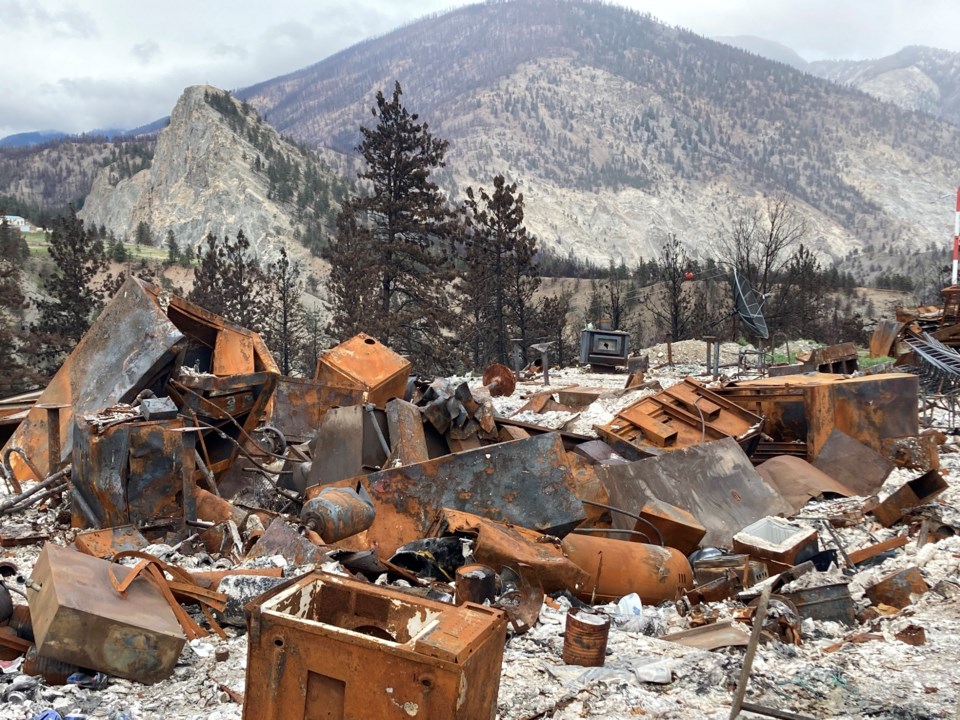I’ve been thinking about Lytton lately.
A few days ago, June 30, marked the one-year anniversary of the day 90 per cent of the village burned to the ground. It has been a whole year, and for the most part, Lytton still lies in a pile of rubble.
The perennial flowers have sprouted up again for another year. The contrast between their bright, beautiful, yellow and red colours against a backdrop of rusted, charred metal and blackened wood—the remnants of people’s homes and lives—is jarring.
I’ll never forget the day I learned about the fire on the news. We stood in front of the television, utterly shocked at what had happened. I had just driven through Lytton a couple of weeks prior on my way down to Vancouver, and while it was getting pretty hot, I had no idea how bad it was going to get.
Lytton has a special place in my heart. It’s the village that helped my family get their careers and lives started. My family lived and worked in the town for several years in the 1990s.
Every time my family drove through the area, my parents would tell a new story of their time in the village: My mother’s Herculean trips up the hills with two toddlers in tow, or the memories from their first rental in the community; my older sisters learning to swim in the Lytton pool, and the stories about the friendships they made that lasted decades after they left.
Sadly, because of the fire, my family’s first rental in Lytton has been reduced to ash. The pool my sisters grew up learning to swim in is gone. The houses of old friends are in heaps of rubble.
While the flowers have risen again, the town itself has not. A year on, most of the buildings look exactly like they did after the fire first ripped through the community. Why the Lytton rebuild has been so slow is complicated.
A web of overlapping polities, insurance, safety work and archaeology permits have all coalesced with the goal of “building back better,” which has slowed down the community’s rebuild substantially.
I, like many of Lytton’s residents, expected the town to be farther along in the rebuilding process by now, with the rubble at least cleared up. Parts of the area are cleared, and some rebuilding is underway, but it has been slow.
The provincial and federal governments have committed $49 million and $77 million, respectively, to rebuild the community. The exact cost for a complete rebuild is still unknown, but some estimates put it into the billions.
To add insult to injury, the provincial government recently pushed for a $789-million replacement for the Royal BC Museum—at a time when Lytton’s two small museums still lie in ruin.
The mayor of Clearwater, B.C., Merlin Blackwell, summarized it well in a semi-viral tweet. “Let’s move the Royal BC Museum to Lytton. We then build a 1:1 scale model of pre-fire Lytton, with needed enhancements on First Nations History. Then we let the people of Lytton live there as a ‘historical reenactment.’ Or we could just build Lytton,” said Blackwell.
The provincial government has since backed away from the pricy museum rebuild and committed more resources to the Lytton area, but the slight has already been felt.
It may take some time to rebuild Lytton, but I have faith that the community will rise again as it has in the past. It will never be the same as it was, but the resilience of the residents to rebuild gives me hope that the community will come back stronger than before.
If there is one lesson we can learn from the Lytton fire, it’s that mitigation is substantially easier and cheaper than rebuilding from the ground up.
New community wildfire resiliency plans for Whistler and the Squamish-Lillooet Regional District electoral areas are an excellent start for this mitigation work.
The recommendations in those plans should be acted on with haste, because while it may be a bit wetter and colder this year, modelling predicts hotter and dryer summers in the region in the years to come.
Individually we can all do our part to help reduce wildfire risk. Property owners can sign up for FireSmart assessments, and Whistlerites can also adopt a trail or volunteer with their local fire service.
To help rebuild Lytton, you can donate to the Canadian Red Cross at www.redcross.ca.




